At GNAAS, transporting patients at 190mph saves time. But what saves lives is our critical care team.
Our onboard team is usually made up of a pilot, a specialist pre-hospital doctor and a paramedic.
Paramedics at GNAAS are all full-time members of staff and an integral part of the team. Hollie Smith has been a paramedic with the charity since January 2022.
Holly Taylor interviewed Hollie to find out how a day on duty at GNAAS runs…
5.00am
My alarm goes off at 5.00am most mornings, and I come into work earlier to use the gym and do a CrossFit workout.
I’ll have a shower on base after my workout and prepare my breakfast which is usually muesli or egg muffins.
The next thing I do is go outside and get the blood for the day that the blood bikers have dropped off for us, ready for any transfusions we need to do at the scene of an incident. This will go straight into the hangar and be loaded onto the helicopter for the day.
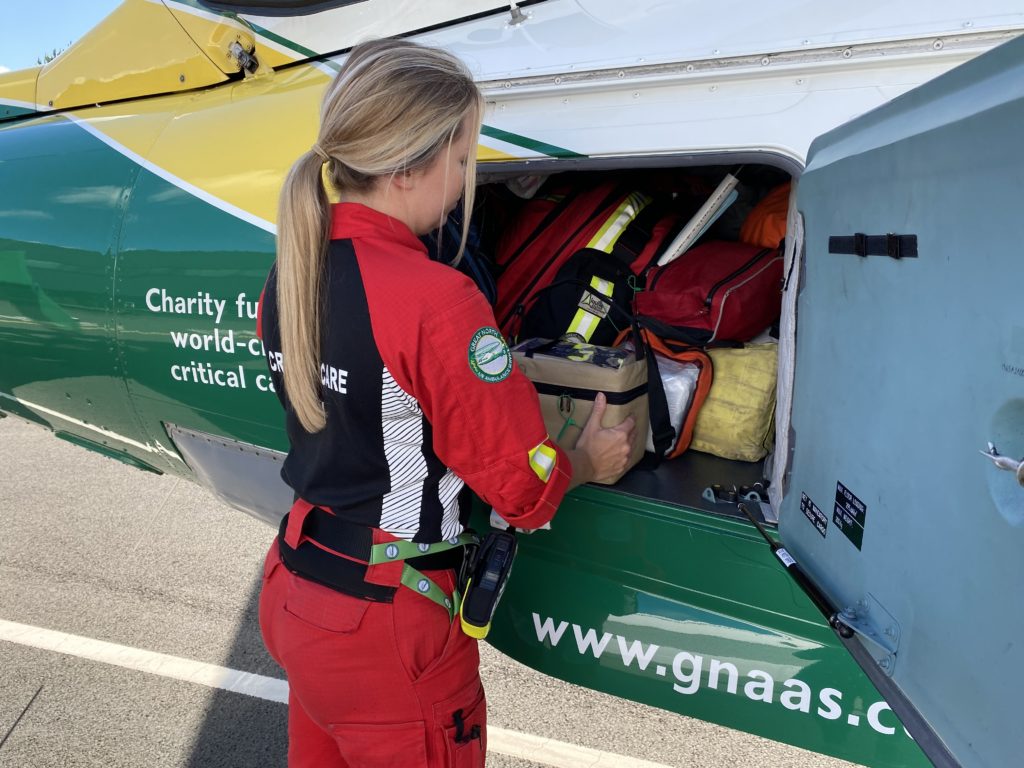

7.30am – 9.00am
We always check the kit before 8.00am which is when our shift starts, and the helicopter goes online.
The overnight car clocks off at 8.00am and we must make sure we’re ready for our first potential call-out of the day.
The doctor and I will go through the checklist for our kit bags and make sure everything is there that should be. We make sure that all of the medicine we need are tagged and unused and we test all of the medical devices to ensure they’re working like the ultrasound and ventilator.
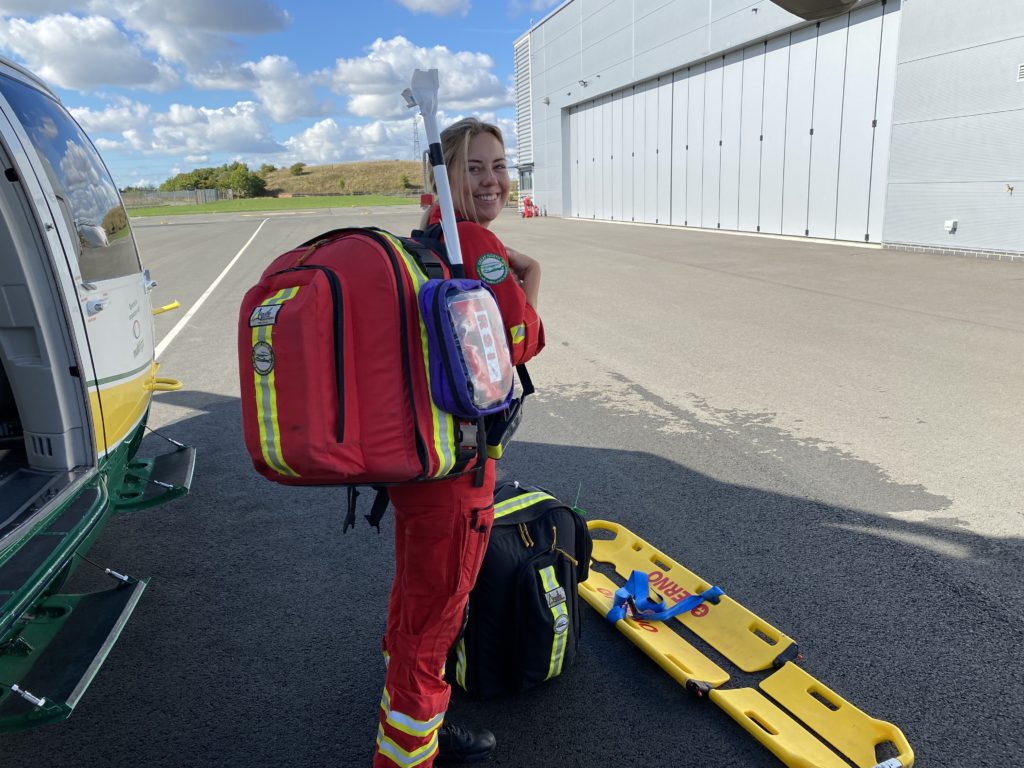

We make sure the car and aircraft are both fully stocked so whichever mode of transport we have to use, it’s already there.
The pilot will then do his checks on the aircraft, and we will check over the car to make sure the sirens and the blue lights are working.
We then come in, put on a pot of coffee, and the duty pilot that day will give us his morning brief. This usually contains information about the weather and if there are any things we need to be mindful of that day when flying.
Following this, it’s time for the medical morning brief.
During this brief, we find out about adverse events that may have happened through the night, we update policy and discuss stats like how many call-outs we’ve done that week or month.
We’ll also do a standard operating procedure of the day task, and this could be anything from how to treat hypothermic patients to how to administer certain medicine effectively.
We’re always constantly training at GNAAS and keeping our skills and knowledge fresh and up to date.
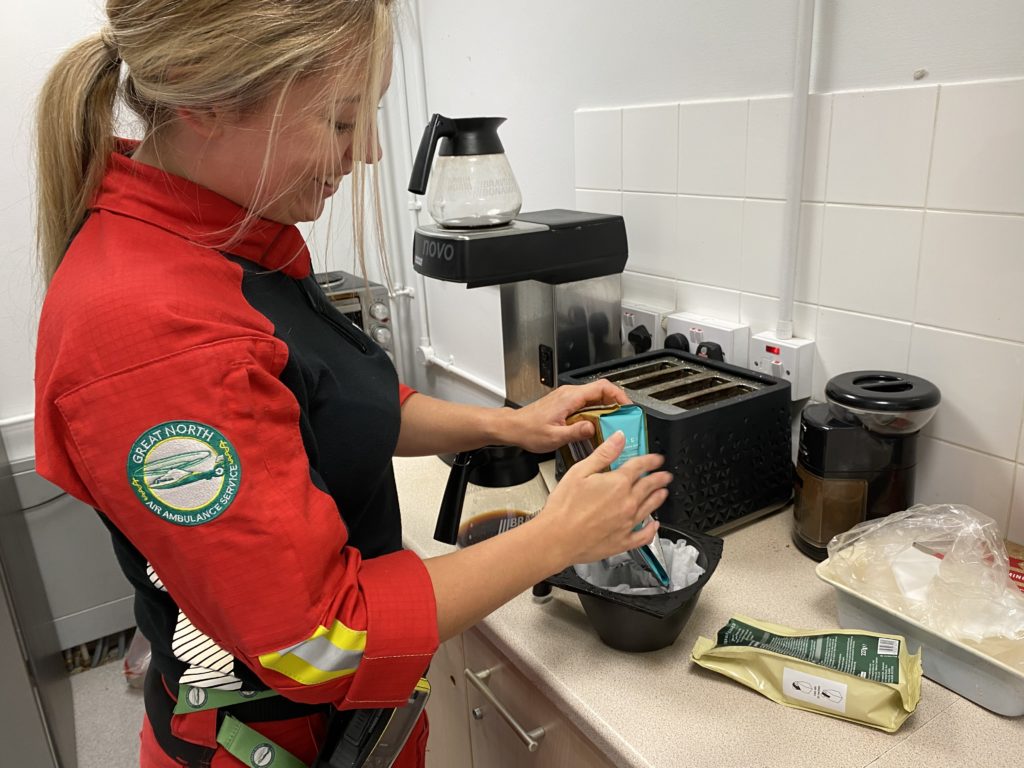

9.00am
I have my breakfast around this time, and we crack on with the daily tasks while waiting for a call-out (if we haven’t been out already, that is).
The daily tasks can be things like checking the dates on medicine, making sure the base is clean and tidy, washing the aircraft, and ringing hospitals to check on patients we’ve treated the day before.
If we’re not on a call-out, we will always do a set of simulations with manikins that are scenario based. The scenario will be picked at random for us by the dispatcher on the airdesk that day.
Day to day, we may not see an array of different incidents, so by picking simulations to work through we can be sure we’re well equipped to deal with anyone and anything we may face.
10.00am – 1.30pm
When we’re tasked to an incident, a buzzer will go off across the base, the pilot will work out where we’re going and call air traffic control then we’ll grab our helmets and run to the aircraft.
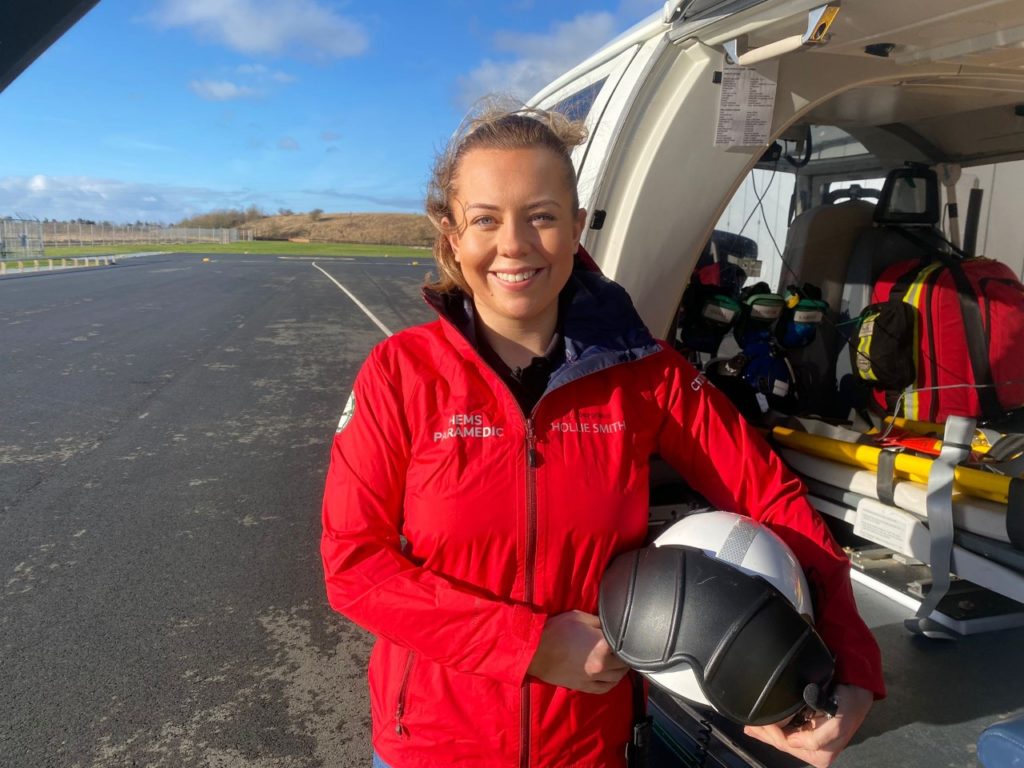

The pilot will then run checks with the doctor, and we read from a checklist to make sure we’re all good to fly.
The paramedic will always sit in the front with the pilot and enter the grid reference for where we are going into the navigation iPad to help them out. It’s our job to watch out for obstructions, too.
Once we’ve lifted, there are things we must be aware of, like reading the map and using the radio to keep in touch with the airdesk to let them know our ETA and find out more about the patient and their condition.
Once we get to our destination, we do some pre-landing checks and make sure the public is safe and nobody is around before we land and get out. We’ll then grab our kit and head to the scene.
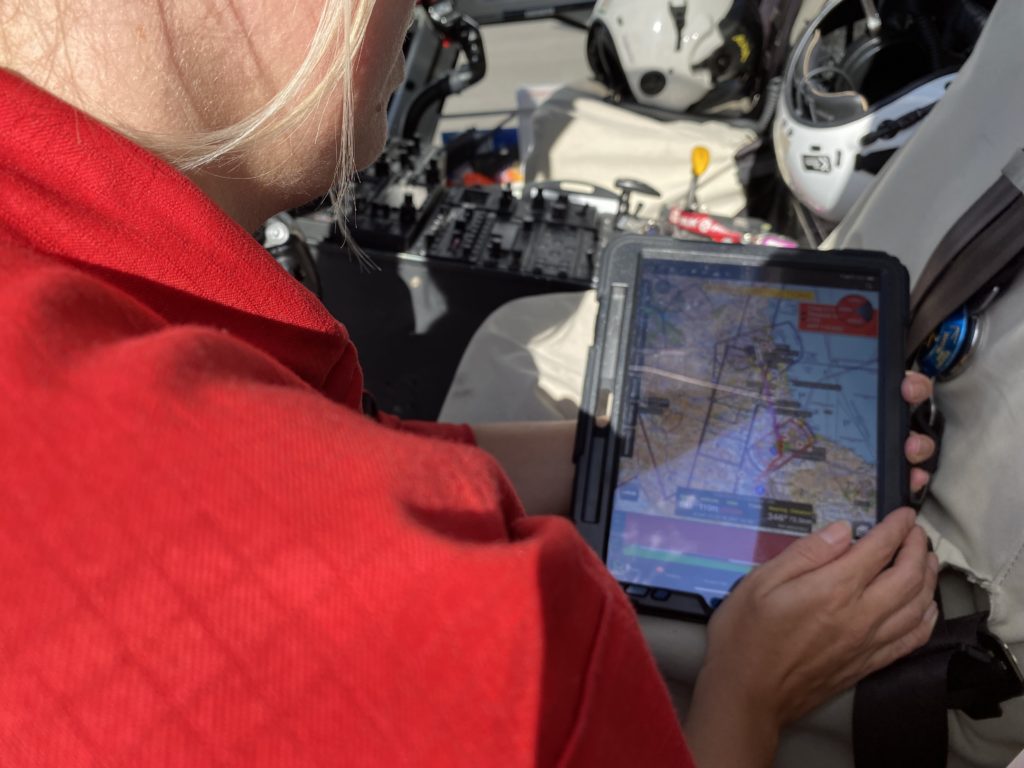

While on the scene of an incident, our job is to always liaise with the airdesk, and our input with the patient is varied depending on what interventions they need.
Typically, a major part of our role on scene is to prepare the kit needed to deliver advanced interventions that only our team do in the region such as a blood for a transfusion, or anaesthetic if we need to put a patient in an induced coma.
We also set up the CPR machine, draw up the necessary medication, keep the pilot updated, deal with other emergency services and manage the logistics of the scene.
GNAAS paramedics really act as a driving force on the ground when we’re on scene, driving the teams forward and getting the patients to hospital as fast and as safely as possible.
The team will then discuss whether we need to take the patient by road or air.
When we arrive at the hospital, we hand over the patient to the A&E staff and let them know the patient’s immediate needs as well as what medication we’ve given them and how much.
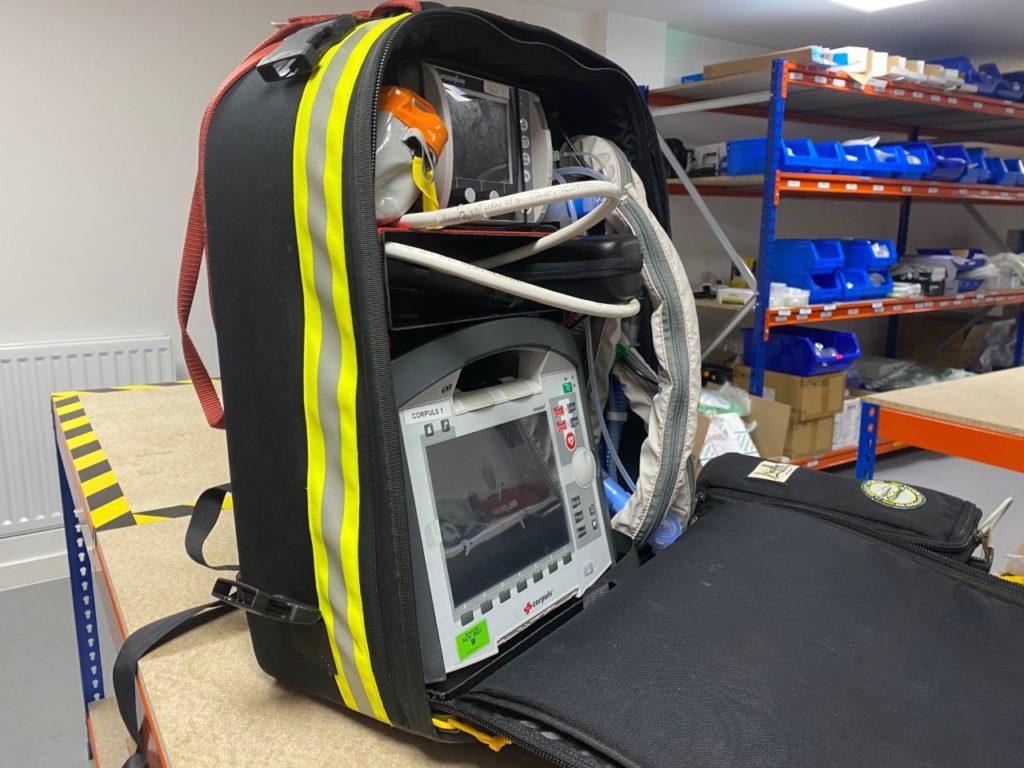

We’ll then contact the airdesk to let them know we’re free to attend another job or head back to base.
2.00pm
Once we’ve landed back on base our first priority is to help the pilot refuel and replenish all of our kit bags so we’re ready to head to another job if need be.
We’ll then do the electronic paperwork on the patient we’ve attended and we’ll debrief about the job.
The debrief is really important as if it has been a particularly difficult task, it’s good to chat with the team. It’s also good to talk about what went well or what we could have done differently and whether we need any support.
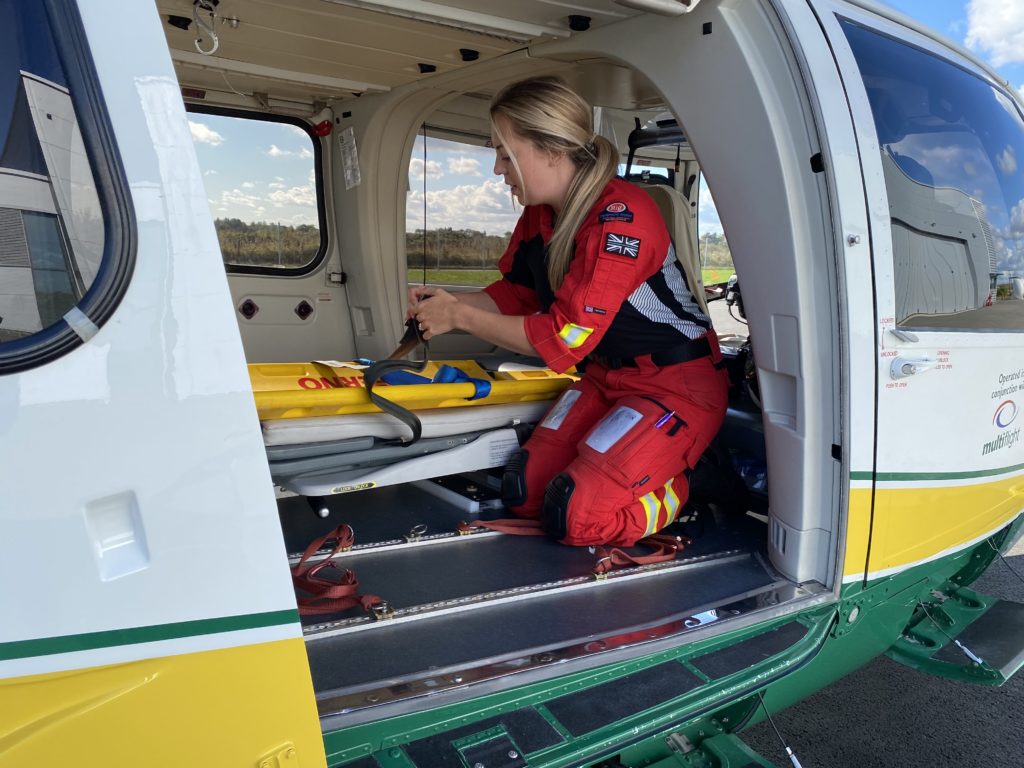

Now, it’s time for lunch!
The day will pretty much go the same now until it gets dark, and we will be tasked and tasked again to where we are needed across the North East. It averages out across the year that we attend around five call-outs a day.
7.30pm
A paramedic’s shift ends at 8pm but if it’s dark before then, we’ll go out on the overnight car to finish off our shift.
We then take all the equipment and blood off the aircraft and check it’s locked away.
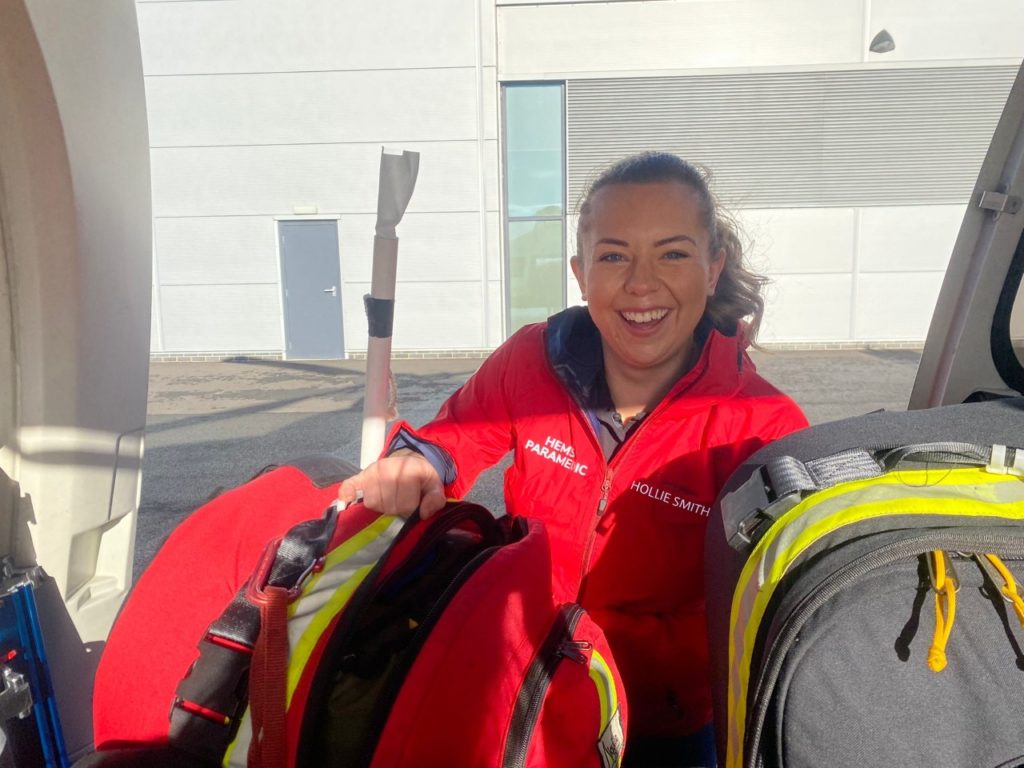

Now, it’s time to get changed out of my uniform, head home, destress and get ready for another shift tomorrow!



